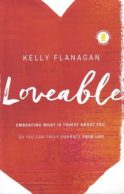Addiction, Attachment, Trauma and Recovery: The Power of Connection
In his recently published book, Addiction, Attachment, Trauma and Recovery: The Power of Connection, Morgan offers a new framework for clinicians working with clients like myself that combines interpersonal neurobiology and social ecology and focuses on addiction and recovery from an attachment-sensitive counseling approach. The soul of addiction, Morgan says, is a lack of connection and belonging. “Recovery,” he writes, ”is a restoration to connection, to meaningful and life-giving relationships” (pg. xxix). The traditional models of addiction—it’s a disease, a choice, a learned behavior—are being replaced by models focused on relational ecologies.
The Neuroscience of Human Relationships: Attachment and the Developing Social Brain
In 2006, Louis Cozolino, a therapist and professor of psychology at the Pepperdine University, published the first edition of his book, The Neuroscience of Human Relationships. Since then, the field of neuroscience has expanded immensely. As a result, Cozolino has published a second edition, which contains much of the same content and more. It follows the same format as the first edition while integrating contemporary research with existing knowledge of the social brain.
Essential Psychopathology & Its Treatment
Essential Psychopathology & Its Treatment, 4th edition, includes updated research and data in the realm of psychopathology, etiology, and neuroscience. It covers the basics as well as the more complex details associated with disorders, psychopharmacology, and treatment.
Relational Psychoanalysis and Psychotherapy Integration
Relational Psychoanalysis and Psychotherapy Integration details how psychoanalysis can be integrated with other forms of non-analytical psychotherapeutic techniques.
Unshame: Healing Trauma-based Shame through Psychotherapy
I follow Carolyn’s blog because her writing fascinates me. She helps people (mainly in the UK) recover from trauma, abuse, and dissociative disorders, heavy stuff. Yet, she writes with a light hand—her use of figurative language, strong nouns and verbs, pacing, structure, and characterization create stories that share the confusion, the pain, the doubt, the suffering, and the dread that come with trauma as well as the desire to surmount it all and be healthy without miring the reader in an abyss of drop-dead emotions.
When I learned about her new book, Unshame: Healing Trauma-based Shame through Psychotherapy, I requested a reviewer’s copy.
Brief Dynamic Therapy
As part of the “Theories of Psychotherapy Series” from the American Psychological Association (APA), this book focuses the components and benefits of brief therapy. Intended for clinicians, Levenson’s book is informative and instructive as it is paired with a companion video that demonstrates the treatment. The brevity and organization make this book helpfully simple and user-friendly. Levenson utilizes tables, bulleted lists, and other visuals alongside her well-researched writing to clearly present this treatment as a viable tool for therapists.
Doctored: The Disillusionment of an American Physician
Doctors generally begin their journey as eager medical students determined to change the world one patient at a time. With intelligence, compassion, and a desire to help others, medical students muster up enough drive to fight through medical school and residency, accepting the hours of work, sleepless nights, and giant holes left in their bank account in pursuit of what they believe to be a worthwhile, fulfilling profession both morally and economically.
However, in Doctored: The Disillusionment of an American Physician, Sandeep Jauhar suggests that it’s difficult to maintain this view within the current medical climate because it’s dominated by the government and large corporations set out to generate income, even if it’s at patients’ expense. In this powerful and thought-provoking memoir, Jauhar utilizes case studies and anecdotes as he reveals his journey as a doctor facing what he refers to as “the midlife crisis in American medicine” and his attempts to understand why “medicine today is as fraught as it’s ever been” (15).
Truly Mindful Coloring
I struggle to sit still (unless I’m sitting outside in nature, but I’m talking about everyday life here). Ask me to sit and be silent? Well my mental chatter loves to make me nuts. I focus on the breath. I focus on sensation. I focus on the fact that I am not focusing, with a touch of loving kindness and compassion. I am kind to myself no doubt there; I accept that my mind loves to whirl and twirl, to take facts and create stories, to take a fleeting image or sensation and create a long-winded tale. Even here, on the page, the words keep flowing when the point has most likely already been made. I’ve read countless books (reviewed many, done the practices). I’ve attended webinars and workshops and meditation groups, all with the same frustration. Silence while sitting escapes me. I thought I was hopeless until now.
Learning From the Germans: Race and the Memory of Evil
Imagine revisiting a country that once committed atrocities to your own populations; seeing people going about with their everyday lives normally or waving, smiling as they pass you by. How would your instincts lead you to react? Forgive? Move on? Or even, as Susan Neiman suggested, learn from them?
Treating Trauma-Related Dissociation
In their preface, Kathy Steele, Suzette Boon, and Onno van der Hart challenge the classic notion of ‘don’t just do something, stand there’ with a new notion: ‘don’t just do something, be there’.














